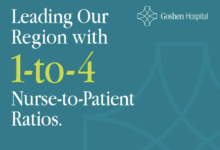NICE recommends tablet option for treating uterine fibroid symptoms

As many as 30,000 adult patients could benefit from a new treatment option for moderate to severe symptoms of uterine fibroids, according to the National Institute for Health and Care Excellence.
NICE’s approval of linzagolix (Yselty) provides an additional option for adults with fibroids and allows clinicians to provide more individualised care in the treatment of moderate to severe symptoms.
“Linzagolix offers greater flexibility, as it can be taken either with or without hormone therapy”
Jonathan Benger
Taken once a day as a single tablet, linzagolix (Yselty), which is made by Theramex, is a gonadotropin-releasing hormone (GnRH) antagonist.
It works by reducing the release of hormones that control oestrogen and progesterone production by the ovaries, noted NICE.
Clinical trials suggest it is effective in reducing the bleeding caused by uterine fibroids, and also shrinking the fibroids themselves, when compared with placebo.
Linzagolix is recommended for use as a longer-term treatment – more than six months – and is not for patients who need short-term treatment, such as before planned uterine fibroid surgery.
It can also be taken with or without hormonal add-back therapy, which involves taking a low dose of hormones to give the body enough hormones to protect bones and control any possible side effects.
NICE highlighted that uterine fibroids were non-cancerous growths that develop in or around the uterus, which occurred at reproductive age and could become smaller after menopause.
It noted that their exact cause was not known, but they have been linked to oestrogen and progesterone.
Around 66% of women develop at least one uterine fibroid during their lifetime, said the institute but flagged that most were small and did not cause symptoms.
However, it said some people with fibroids developed symptoms that could include very heavy or long menstrual periods or pelvic pressure or pain, which had a negative effect on their quality of life.
Usual treatment for moderate to severe symptoms of uterine fibroids includes hormonal treatments, such as GnRH receptor agonists and antagonists, and supportive care.
The institute described linzagolix as an “additional option” and one that also offers an effective alternative to injectable GnRH agonists.
Jonathan Benger, NICE chief medical officer and deputy chief executive, said: “I am pleased we have been able to recommend a further treatment option for managing moderate to severe symptoms of uterine fibroids.
“Uterine fibroids can have many debilitating symptoms including pain and heavy menstrual bleeding. If left untreated they can lead to infertility and have a substantial effect on quality of life.”
He added: “Linzagolix offers greater flexibility, as it can be taken either with or without hormone therapy and means clinicians can provide more personalised care in the treatment of this often debilitating condition.”
The NICE guidance on linzagolix for treating moderate to severe symptoms of uterine fibroids was published on its website on 14 August.







